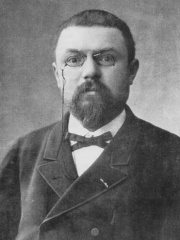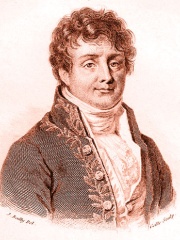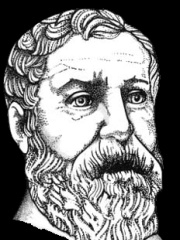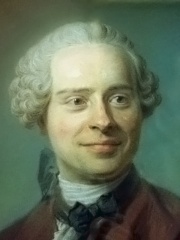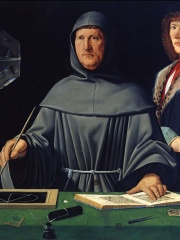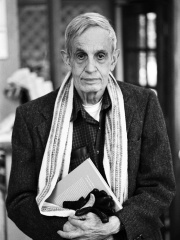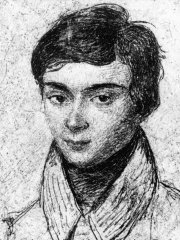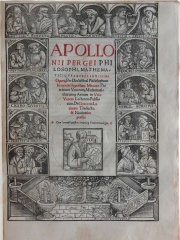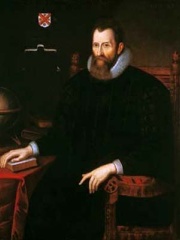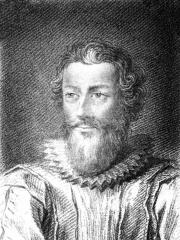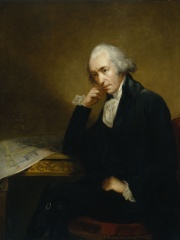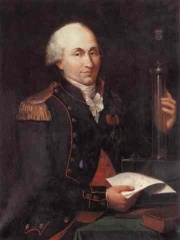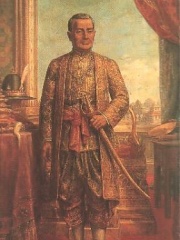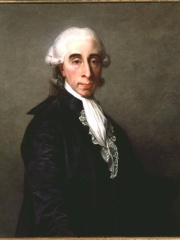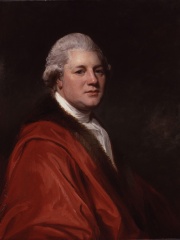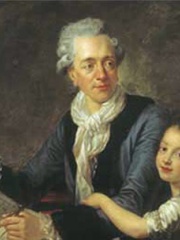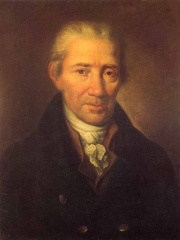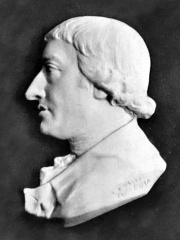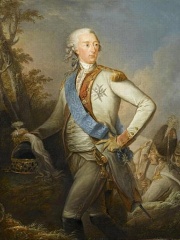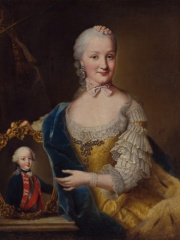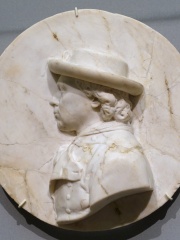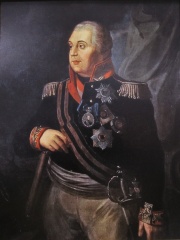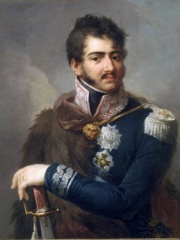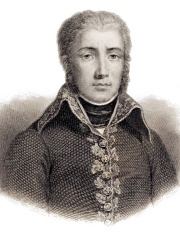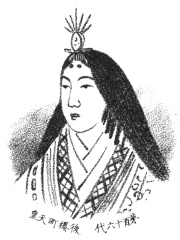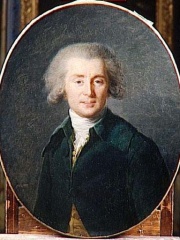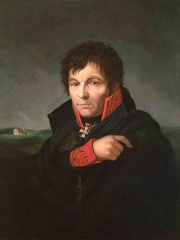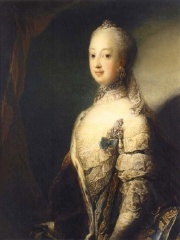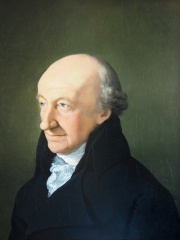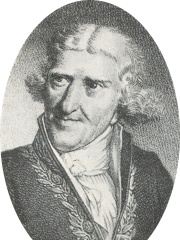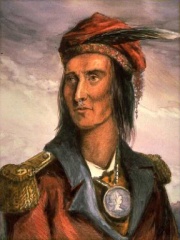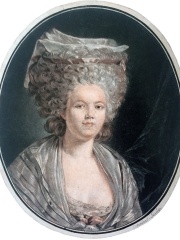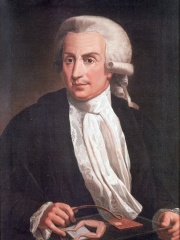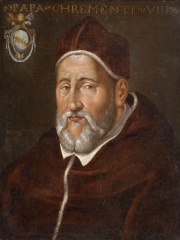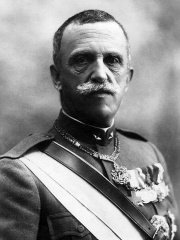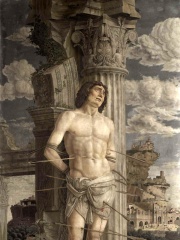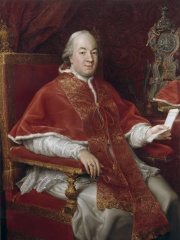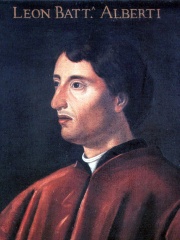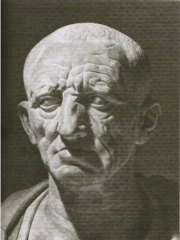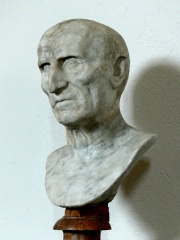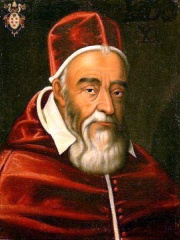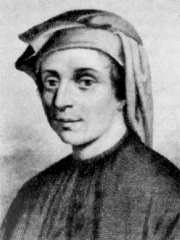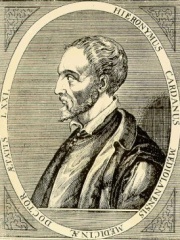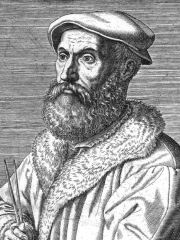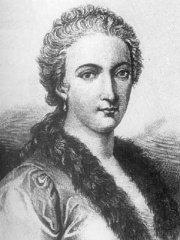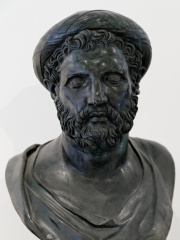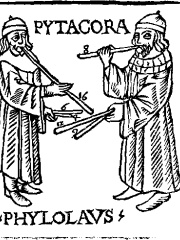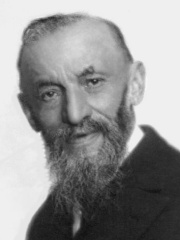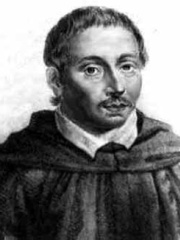MATHEMATICIAN
Joseph-Louis Lagrange
1736 - 1813
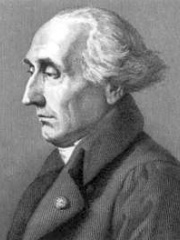
 Joseph-Louis Lagrange
Joseph-Louis Lagrange
Joseph-Louis Lagrange (born Giuseppe Luigi Lagrangia or Giuseppe Ludovico De la Grange Tournier; 25 January 1736 – 10 April 1813), also reported as Giuseppe Luigi Lagrange or Lagrangia, was an Italian mathematician, physicist and astronomer, later naturalized French. He made significant contributions to the fields of analysis, number theory, and both classical and celestial mechanics. In 1766, on the recommendation of Swiss Leonhard Euler and French d'Alembert, Lagrange succeeded Euler as the director of mathematics at the Prussian Academy of Sciences in Berlin, Prussia, where he stayed for over twenty years, producing volumes of work and winning several prizes of the French Academy of Sciences. Read more on Wikipedia
Since 2007, the English Wikipedia page of Joseph-Louis Lagrange has received more than 1,310,720 page views. His biography is available in 88 different languages on Wikipedia (up from 87 in 2019). Joseph-Louis Lagrange is the 25th most popular mathematician (down from 18th in 2019), the 152nd most popular biography from Italy (down from 107th in 2019) and the 4th most popular Italian Mathematician.
Lagrange was most famous for his work in mathematics. He is best known for his work on the four-square theorem, which he proved in 1770.
Memorability Metrics
1.3M
Page Views (PV)
75.30
Historical Popularity Index (HPI)
88
Languages Editions (L)
11.12
Effective Languages (L*)
3.94
Coefficient of Variation (CV)
Page views of Joseph-Louis Lagranges by language
Over the past year Joseph-Louis Lagrange has had the most page views in the English wikipedia edition with 178,213 views, followed by Spanish (40,019), and Italian (39,230). In terms of yearly growth of page views the top 3 wikpedia editions are Bulgarian (357.69%), Hindi (106.18%), and Sinhalese (64.94%)
Among MATHEMATICIANS
Among mathematicians, Joseph-Louis Lagrange ranks 25 out of 1,004. Before him are Henri Poincaré, Joseph Fourier, Hero of Alexandria, Jean le Rond d'Alembert, Luca Pacioli, and John von Neumann. After him are John Forbes Nash Jr., Évariste Galois, Apollonius of Perga, John Napier, François Viète, and Diophantus.
Most Popular Mathematicians in Wikipedia
Go to all RankingsHenri Poincaré
1854 - 1912
HPI: 75.85
Rank: 19
Joseph Fourier
1768 - 1830
HPI: 75.81
Rank: 20
Hero of Alexandria
10 - 75
HPI: 75.71
Rank: 21
Jean le Rond d'Alembert
1717 - 1783
HPI: 75.67
Rank: 22
Luca Pacioli
1445 - 1517
HPI: 75.53
Rank: 23
John von Neumann
1903 - 1957
HPI: 75.43
Rank: 24
Joseph-Louis Lagrange
1736 - 1813
HPI: 75.30
Rank: 25
John Forbes Nash Jr.
1928 - 2015
HPI: 75.17
Rank: 26
Évariste Galois
1811 - 1832
HPI: 74.98
Rank: 27
Apollonius of Perga
262 BC - 190 BC
HPI: 74.96
Rank: 28
John Napier
1550 - 1617
HPI: 74.84
Rank: 29
François Viète
1540 - 1603
HPI: 74.65
Rank: 30
Diophantus
201 - 300
HPI: 74.54
Rank: 31
Contemporaries
Among people born in 1736, Joseph-Louis Lagrange ranks 3. Before him are James Watt, and Charles-Augustin de Coulomb. After him are Rama I, Jean Sylvain Bailly, James Macpherson, Claude Nicolas Ledoux, Johann Georg Albrechtsberger, Rudolf Erich Raspe, Louis Joseph, Prince of Condé, Princess Friederike of Brandenburg-Schwedt, and Franz Xaver Messerschmidt. Among people deceased in 1813, Joseph-Louis Lagrange ranks 1. After him are Mikhail Kutuzov, Józef Poniatowski, Jean Victor Marie Moreau, Empress Go-Sakuramachi, André Grétry, Gerhard von Scharnhorst, Sophia Magdalena of Denmark, Christoph Martin Wieland, Antoine-Augustin Parmentier, Tecumseh, and Rose Bertin.
Others Born in 1736
Go to all RankingsJames Watt
INVENTOR
1736 - 1819
HPI: 84.86
Rank: 1
Charles-Augustin de Coulomb
PHYSICIST
1736 - 1806
HPI: 77.33
Rank: 2
Joseph-Louis Lagrange
MATHEMATICIAN
1736 - 1813
HPI: 75.30
Rank: 3
Rama I
POLITICIAN
1736 - 1809
HPI: 66.53
Rank: 4
Jean Sylvain Bailly
POLITICIAN
1736 - 1793
HPI: 65.28
Rank: 5
James Macpherson
POLITICIAN
1736 - 1796
HPI: 62.29
Rank: 6
Claude Nicolas Ledoux
ARCHITECT
1736 - 1806
HPI: 62.08
Rank: 7
Johann Georg Albrechtsberger
COMPOSER
1736 - 1809
HPI: 61.52
Rank: 8
Rudolf Erich Raspe
WRITER
1736 - 1794
HPI: 59.34
Rank: 9
Louis Joseph, Prince of Condé
POLITICIAN
1736 - 1818
HPI: 59.34
Rank: 10
Princess Friederike of Brandenburg-Schwedt
POLITICIAN
1736 - 1798
HPI: 58.39
Rank: 11
Franz Xaver Messerschmidt
SCULPTOR
1736 - 1783
HPI: 57.91
Rank: 12
Others Deceased in 1813
Go to all RankingsJoseph-Louis Lagrange
MATHEMATICIAN
1736 - 1813
HPI: 75.30
Rank: 1
Mikhail Kutuzov
MILITARY PERSONNEL
1745 - 1813
HPI: 73.49
Rank: 2
Józef Poniatowski
MILITARY PERSONNEL
1763 - 1813
HPI: 67.89
Rank: 3
Jean Victor Marie Moreau
MILITARY PERSONNEL
1763 - 1813
HPI: 65.00
Rank: 4
Empress Go-Sakuramachi
POLITICIAN
1740 - 1813
HPI: 64.83
Rank: 5
André Grétry
COMPOSER
1741 - 1813
HPI: 62.99
Rank: 6
Gerhard von Scharnhorst
MILITARY PERSONNEL
1755 - 1813
HPI: 62.46
Rank: 7
Sophia Magdalena of Denmark
COMPANION
1746 - 1813
HPI: 61.80
Rank: 8
Christoph Martin Wieland
WRITER
1733 - 1813
HPI: 61.79
Rank: 9
Antoine-Augustin Parmentier
BIOLOGIST
1737 - 1813
HPI: 61.37
Rank: 10
Tecumseh
POLITICIAN
1768 - 1813
HPI: 61.15
Rank: 11
Rose Bertin
FASHION DESIGNER
1747 - 1813
HPI: 59.64
Rank: 12
In Italy
Among people born in Italy, Joseph-Louis Lagrange ranks 152 out of 5,161. Before him are Plautus (-254), Luigi Galvani (1737), Pope Clement VIII (1536), Marcello Mastroianni (1924), Victor Emmanuel III of Italy (1869), and Andrea Mantegna (1431). After him are Pope Pius VI (1717), Leon Battista Alberti (1404), Cato the Elder (-243), Galba (-3), Pope Leo XI (1535), and Anselm of Canterbury (1033).
Others born in Italy
Go to all RankingsPlautus
WRITER
254 BC - 184 BC
HPI: 75.44
Rank: 146
Luigi Galvani
PHYSICIST
1737 - 1798
HPI: 75.43
Rank: 147
Pope Clement VIII
RELIGIOUS FIGURE
1536 - 1605
HPI: 75.43
Rank: 148
Marcello Mastroianni
ACTOR
1924 - 1996
HPI: 75.42
Rank: 149
Victor Emmanuel III of Italy
POLITICIAN
1869 - 1947
HPI: 75.33
Rank: 150
Andrea Mantegna
PAINTER
1431 - 1506
HPI: 75.33
Rank: 151
Joseph-Louis Lagrange
MATHEMATICIAN
1736 - 1813
HPI: 75.30
Rank: 152
Pope Pius VI
RELIGIOUS FIGURE
1717 - 1799
HPI: 75.30
Rank: 153
Leon Battista Alberti
ARCHITECT
1404 - 1472
HPI: 75.29
Rank: 154
Cato the Elder
WRITER
243 BC - 149 BC
HPI: 75.29
Rank: 155
Galba
POLITICIAN
3 BC - 69
HPI: 75.22
Rank: 156
Pope Leo XI
RELIGIOUS FIGURE
1535 - 1605
HPI: 75.20
Rank: 157
Anselm of Canterbury
RELIGIOUS FIGURE
1033 - 1109
HPI: 75.19
Rank: 158
Among MATHEMATICIANS In Italy
Among mathematicians born in Italy, Joseph-Louis Lagrange ranks 4. Before him are Archimedes (-287), Fibonacci (1170), and Luca Pacioli (1445). After him are Gerolamo Cardano (1501), Niccolò Fontana Tartaglia (1499), Maria Gaetana Agnesi (1718), Archytas (-428), Philolaus (-470), Giuseppe Peano (1858), Bonaventura Cavalieri (1598), and Lodovico Ferrari (1522).
Archimedes
287 BC - 212 BC
HPI: 89.76
Rank: 1
Fibonacci
1170 - 1240
HPI: 79.36
Rank: 2
Luca Pacioli
1445 - 1517
HPI: 75.53
Rank: 3
Joseph-Louis Lagrange
1736 - 1813
HPI: 75.30
Rank: 4
Gerolamo Cardano
1501 - 1576
HPI: 73.98
Rank: 5
Niccolò Fontana Tartaglia
1499 - 1557
HPI: 70.78
Rank: 6
Maria Gaetana Agnesi
1718 - 1799
HPI: 70.72
Rank: 7
Archytas
428 BC - 347 BC
HPI: 70.60
Rank: 8
Philolaus
470 BC - 390 BC
HPI: 69.92
Rank: 9
Giuseppe Peano
1858 - 1932
HPI: 68.43
Rank: 10
Bonaventura Cavalieri
1598 - 1647
HPI: 67.86
Rank: 11
Lodovico Ferrari
1522 - 1565
HPI: 62.84
Rank: 12
